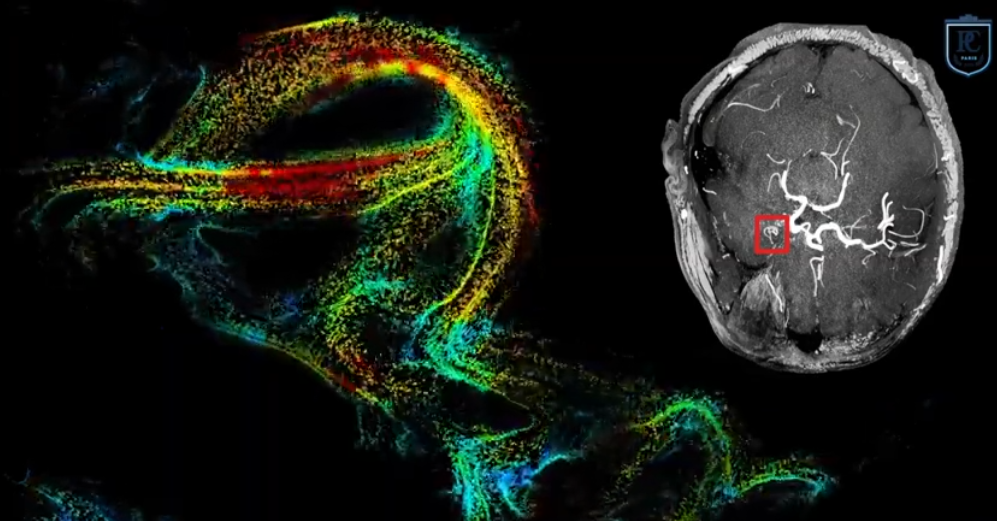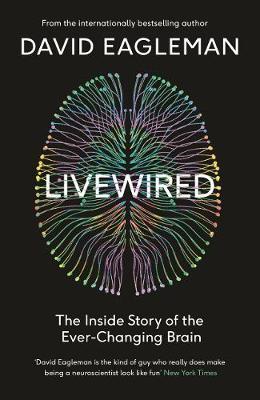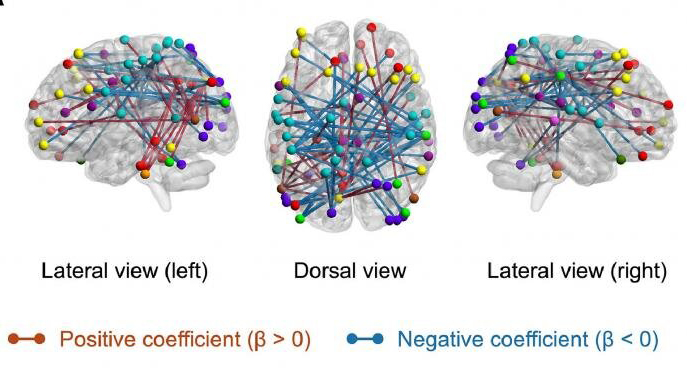Monday, 20 June 2022
Rediscovery of the traces of another hominin species from the same time as Lucy
 The earliest traces of bipedalism are associated with Australopithecus afarensis, the species of the famous fossil Lucy. But if a study published recently in the journal Nature is accurate, scientists have just authenticated different traces of another bipedal species that lived at exactly the same time. (more…)
The earliest traces of bipedalism are associated with Australopithecus afarensis, the species of the famous fossil Lucy. But if a study published recently in the journal Nature is accurate, scientists have just authenticated different traces of another bipedal species that lived at exactly the same time. (more…)
Evolution and the Brain | Comments Closed
Monday, 30 May 2022
Ultrasound localization microscopy provides unprecedented view of blood flow in the brain
 The technologies that can now be used to image various aspects of the anatomy and physiology of the brains of living human beings are triumphs of scientific and technical inventiveness. One of the newest of these techniques is ultrasound localization microscopy, which was recently used to provide the first-ever dynamic images of blood flowing through the capillaries of the brain. This new ability to view blood circulation in the brain so rapidly and precisely opens opportunities for a better understanding of the irrigation of the brain and the problems that can arise with it, such as aneurysms. (more…)
The technologies that can now be used to image various aspects of the anatomy and physiology of the brains of living human beings are triumphs of scientific and technical inventiveness. One of the newest of these techniques is ultrasound localization microscopy, which was recently used to provide the first-ever dynamic images of blood flowing through the capillaries of the brain. This new ability to view blood circulation in the brain so rapidly and precisely opens opportunities for a better understanding of the irrigation of the brain and the problems that can arise with it, such as aneurysms. (more…)
Uncategorized | Comments Closed
Monday, 25 April 2022
Our brain: neither hardware nor software, but “liveware”!
 This week I’d like to tell you about a book by David Eagleman, entitled Livewired: The Inside Story of the Ever-Changing Brain. This book discusses several subjects related to brain plasticity, which is one of Eagleman’s research areas. In this book, one of Eagleman’s main ideas, which he attempts to conceptualize with the term “livewired”, is that the human brain is a machine that spends its time reconfiguring itself. In contrast, computers are “hardwired” with predefined electronic circuits that run software—computer programs that use this computer hardware to perform mathematical calculations and logic operations. The human mind or human thought has often been erroneously compared to a software program that needs the “hardware” of the human brain to manifest itself. This is a very poor metaphor for many reasons, of which the one cited by Eagleman is not the least. (more…)
This week I’d like to tell you about a book by David Eagleman, entitled Livewired: The Inside Story of the Ever-Changing Brain. This book discusses several subjects related to brain plasticity, which is one of Eagleman’s research areas. In this book, one of Eagleman’s main ideas, which he attempts to conceptualize with the term “livewired”, is that the human brain is a machine that spends its time reconfiguring itself. In contrast, computers are “hardwired” with predefined electronic circuits that run software—computer programs that use this computer hardware to perform mathematical calculations and logic operations. The human mind or human thought has often been erroneously compared to a software program that needs the “hardware” of the human brain to manifest itself. This is a very poor metaphor for many reasons, of which the one cited by Eagleman is not the least. (more…)
From the Simple to the Complex | Comments Closed
Monday, 4 April 2022
How to avoid our natural tendency to divide the world between “us” and “them”
 This week, I’d like to talk about two articles on the work of Robert Sapolsky, a primatologist and neurobiologist who published the superb book Behave: The Biology of Humans at Our Best and Worst in 2017. In that book, Sapolsky stylishly and eloquently examined the many factors that have influenced our behaviours from the time of our primate ancestors through to the modern societies of today. He focused especially on our identity behaviours—the ones that make us divide the world into “us” and “them” and that so many politicians now exploit to try to capture our votes. (more…)
This week, I’d like to talk about two articles on the work of Robert Sapolsky, a primatologist and neurobiologist who published the superb book Behave: The Biology of Humans at Our Best and Worst in 2017. In that book, Sapolsky stylishly and eloquently examined the many factors that have influenced our behaviours from the time of our primate ancestors through to the modern societies of today. He focused especially on our identity behaviours—the ones that make us divide the world into “us” and “them” and that so many politicians now exploit to try to capture our votes. (more…)
From Thought to Language | Comments Closed
Tuesday, 15 March 2022
Exercising in childhood appears to have positive effects throughout life
 In the northern hemisphere, spring and summer are finally approaching, and I advise everyone who lives here to take advantage of the increased opportunities to get out in nature for their exercise. Because if there’s one thing that’s been very well established scientifically, it’s that physical exercise has positive effects on all of our bodily functions, including the cognitive ones. I’ve posted about this topic here for example in 2017, so today I’ll keep up the tradition and tell you about a recent study by Toru Ishihara and his team at Kobe University in Japan, about how childhood exercise can maintain and promote cognitive function in later life. (more…)
In the northern hemisphere, spring and summer are finally approaching, and I advise everyone who lives here to take advantage of the increased opportunities to get out in nature for their exercise. Because if there’s one thing that’s been very well established scientifically, it’s that physical exercise has positive effects on all of our bodily functions, including the cognitive ones. I’ve posted about this topic here for example in 2017, so today I’ll keep up the tradition and tell you about a recent study by Toru Ishihara and his team at Kobe University in Japan, about how childhood exercise can maintain and promote cognitive function in later life. (more…)
Body Movement and the Brain | Comments Closed







